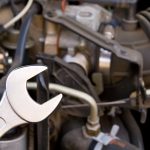For as long as there have been engines there has been a gasket. Over the years the technology has advanced that makes these sealing components more efficient. But every once in a while when they try a new technology sometimes it’s actually a step backwards.
A quick example of this is just my personal opinion. The latest in Gasket technology sometimes referred to as a composite looks and feels like plastic. An example of a step backwards is in the reliability of the Gasket in the General Motors V6 intake manifold. This part looks like a strip of plastic with embedded rubber seals.
Find Your Online Car Repair Manual Today! ->>
And if you pop the hood on a GM six cylinder vehicle chances are you can find evidence of coolant leakage from around the intake manifold. This problem is most evident on late 90 and early 2000 model years.
About engine gaskets
When it comes to leaking engine gaskets you will find that the materials that they are made out of will fall into a few categories. The first one being a hard one such as steel or other types of metal. These would be used in applications such as exhaust manifolds and cylinder heads that generate extremely high temperatures.
Some of the best gaskets on the market today would be a formed or molded silicone type. If you notice this type of sealing gasket can come in three colors. Black is considered for general applications. A blue color gasket is often considered a specialty gasket that can be manufacturer specific. And the most common would be a red or dark orange. This type of silicone gasket is used in high temperature applications.
Replacing leaking engine gaskets
But I will never use silicone from a tube instead of a gasket. There are times when you will need to use silicone or RTV. This is when the factory has applied it to the sealing surface. But if there is a gasket you want to replace it with a new one.
Often I see driveway mechanics trying to reuse old Gaskets. This is not recommended even if the old Gasket appears to be in good condition. It just will not seal as good as a new one because it has all ready been compressed.
When you’re installing new sealing parts taking the time to clean the surfaces is extremely important. The new parts will seal best when used on clean surfaces. Make sure you get all of the dirt, oil deposits, loose rust, old sealer and even the tiniest pieces of the old gasket material off of the sealing surface.
I hope you found this article helpful. If not give me another chance. This next link takes you back to the online auto repair blog from this page about leaking engine gaskets. Review a few more articles about automotive repair and how the Internet can help you fix cars at home.








